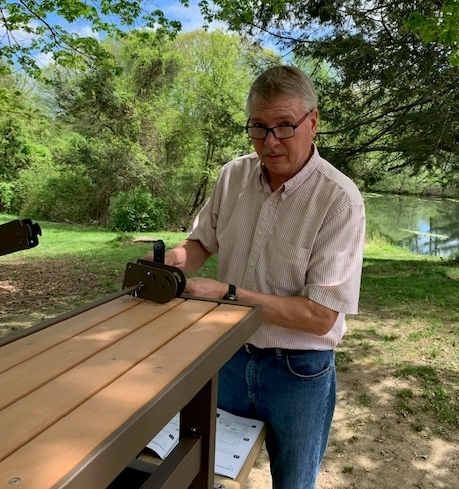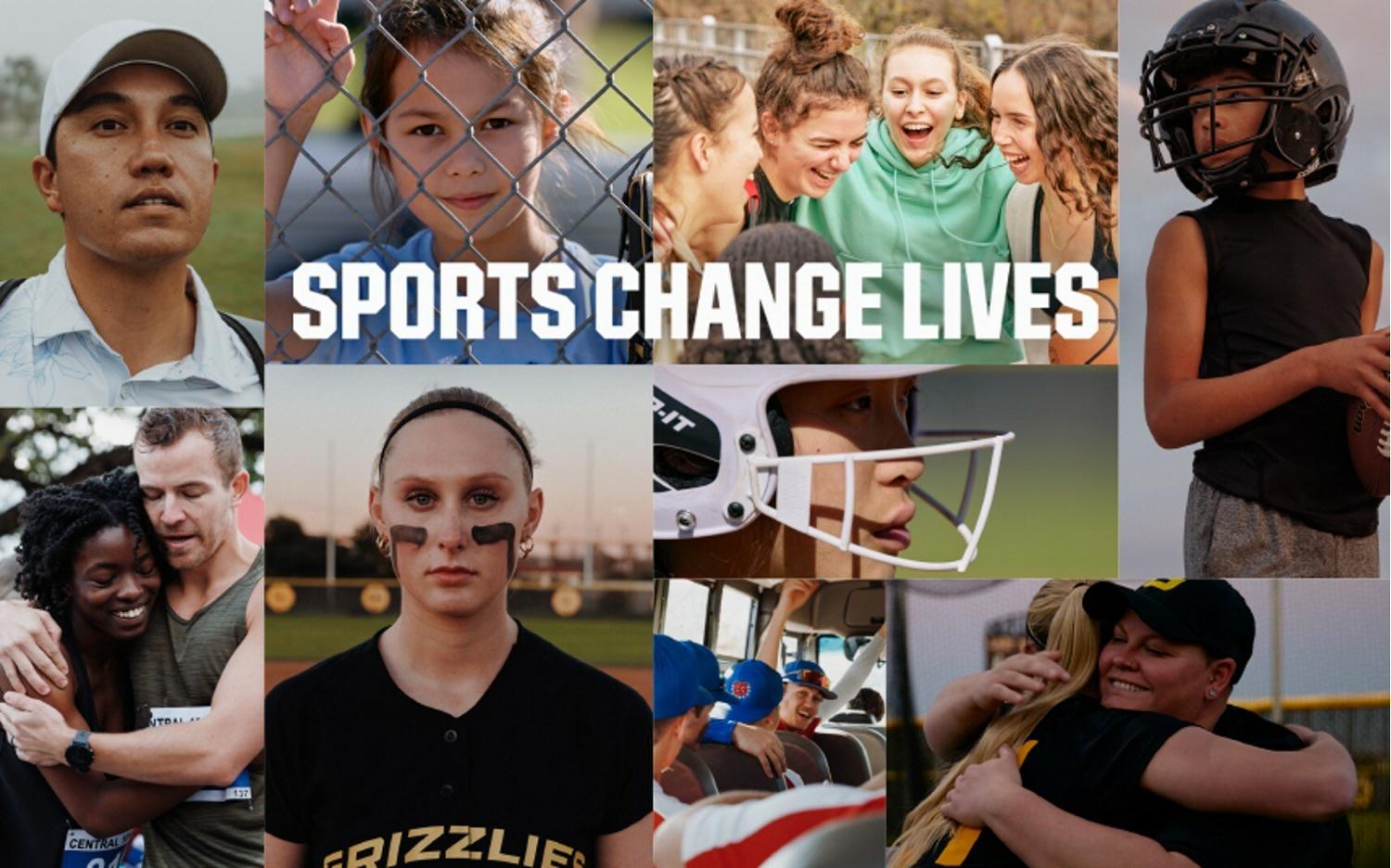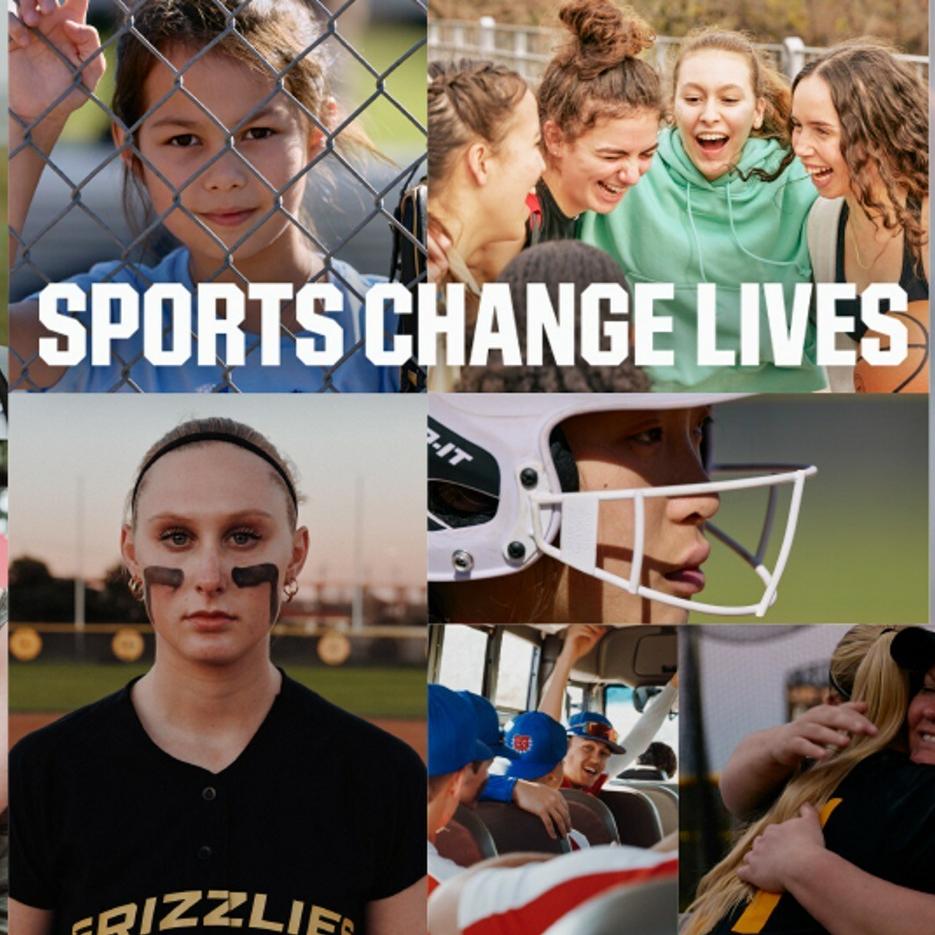Gearing Up for ESG Reporting: Insights from Public Company Executives


Committing to meet environmental, social, and governance (ESG) objectives and targets is one thing. Acting on them is quite another. What are businesses doing to prepare for high-quality sustainability and ESG reporting, and what challenges are they uncovering along the way? To find out, Deloitte surveyed 300 public company executives to get a pulse on current trends and sentiment. Here are five takeaways from the front lines of real-world change.
Embed ESG in the corporate strategy
Nearly 3 in 5 executives (57 percent) say their company has established a cross-functional working group to drive strategic attention to ESG, an increase of 21 percent since last year. Another 42 percent say they’re in the process of establishing one.
A typical ESG working group includes executives from finance, accounting, risk, legal, sustainability, operations, supply chain and other functional areas. Increasingly, accountability for ESG performance can be most effective with an integrated governance structure that brings together all business functions. A philosophy of ownership across the business, paired with a strategic approach to governance, can establish ESG as a strategic priority highly aligned to corporate strategy.
Assign roles and responsibilities
Only 3 percent of executives say their companies are prepared for potential increased ESG regulatory or other disclosure requirements, but many are getting ready. For instance, 81 percent of companies have created new roles or responsibilities, and 89 percent say they’ve enhanced internal goal-setting and accountability mechanisms to promote readiness.
Who has management responsibility over ESG disclosure? Today, in many cases, it’s the chief financial officer (CFO) or chief sustainability officer (CSO), but many respondents indicate that increasingly there is shared responsibility for ESG reporting across the executive leadership team, human resources, supply chain and other functions.
Of those executives surveyed, board-level oversight has been predominantly assigned to the nominating and governance committee, but we are seeing a trend of expanded oversight responsibility across all committees, aligned to respective remit, to drive greater integration and oversight of ESG risks and opportunities.
Increase focus on assurance
Nearly all (96 percent) surveyed executives plan to seek assurance for the next ESG reporting cycle. To prepare for a reasonable level of assurance, 37 percent of companies are starting to apply the Committee of Sponsoring Organizations of the Treadway Commission (COSO)’s internal control guidelines, which can help companies measure, manage and validate ESG information with the same rigor typically applied to financial reporting.
Respondents shared that they use a range of different frameworks and standards for their disclosures. The most common is the Task Force for Climate-related Financial Disclosures (TCFD) (56 percent), closely followed by the Sustainability Accounting Standards Board (SASB) (55 percent). Around half of respondents also use standards from the Greenhouse Gas Protocol, International Integrated Reporting Council (IIRC), and Global Reporting Initiative (GRI).
For multinational firms, the rapid progress of the International Sustainability Standards Board (ISSB) signals optimism for convergence of a number of leading sustainability reporting standards and frameworks and the creation of a global baseline for sustainability reporting to help meet the information needs of the capital markets, as well as serve as the basis upon which other jurisdictions can build.
Develop a workable solution for data gaps
When it comes to sustainability reporting, access to quality ESG data now appears to be a bigger challenge than data availability. Still, a majority (61 percent) of respondents indicate their companies are prepared to disclose details about the greenhouse gas (GHG) emissions they directly produce, known as Scope 1. Even more (76 percent) say they’re ready to disclose details of their Scope 2 GHG emissions, or emissions generated by the electricity a company purchases, a substantial increase from the 47 percent who said so the previous year.
At the same time, Scope 3 emissions — which account for GHGs produced along a company's entire value chain — appear to remain a challenge. Most respondents (86 percent) indicate they’ve run into challenges measuring them, and only 37 percent are prepared to disclose them in detail.
To close any gaps, companies may consider focusing on the Greenhouse Gas Protocol, which currently serves as the leading standard for measuring greenhouse gas emissions and provides for methodologies to promote consistency of measurement with due consideration to the level of measurement uncertainty and data availability.
Invest in technology for ESG reporting, disclosure and action
New technology is on the horizon for many companies as they embark on their ESG integration and disclosure journeys. Nearly all executives (99 percent) are somewhat likely or very likely to invest in new technology to prepare to meet stakeholder expectations and future regulatory requirements.
Technology solutions can assist in accelerating preparedness in moving from reporting in accordance with voluntary sustainability standards and frameworks to enhanced disclosure in accordance with authoritative ESG standards and new regulation.
No matter where a company is in their sustainability journey, strategic attention to ESG integration and disclosure today can help to deliver long term value to stakeholders into the future. By implementing the insights shared by public company executives, companies can gear up for ESG reporting and work to meet stakeholder expectations while also creating long-term value.
Image credit: Andrea Piacquadio/Pexels
Note: This publication contains general information only and Deloitte is not, by means of this publication, rendering accounting, business, financial, investment, legal, tax, or other professional advice or services. This publication is not a substitute for such professional advice or services, nor should it be used as a basis for any decision or action that may affect your business. Before making any decision or taking any action that may affect your business, you should consult a qualified professional advisor. Deloitte shall not be responsible for any loss sustained by any person who relies on this publication.
SVB's Collapse Puts the Future of Climate Tech Into Question


The recent collapse of Silicon Valley Bank (SVB) has placed climate tech into the national spotlight. SVB was a financial hub of the venture-backed sustainability world, with approximately 1,550 climate and clean technology business clients. While other financial institutions didn't always have the in-house skill to understand sustainability startups, it was among SVB’s specialties. The firm’s appetite for funding climate tech ventures resulted in an industry-wide transformation for venture capital.
Investments in climate tech reached a peak in 2021, followed by a 3 percent drop in 2022. However, when evaluated within the context of the 35 percent drop in the overall venture capital market, these numbers indicate investors are still very much interested in climate tech — and SVB helped that startup ecosystem develop.
Within this context, SVB’s collapse — linked to rapidly rising interest rates, combined with a run on the bank fueled by fear that spread on social media — presented a real threat to the climate and clean technology sector.
“SVB’s collapse was terrifying to the industry," said Justin Bean, an impact-focused tech executive and author of What Could Go Right: Designing Our Ideal Future to Emerge from Continual Crises to a Thriving World. "Startup founders and employees often are not making that much money, because they’re trading salary for ownership."
And the potential impact went far further than individual startups. "We saw hard-working people out there creating innovation and sustainable abundance and are helping us compete with countries like China and Russia and helping us get ahead,” Bean said. “If the entire ecosystem was allowed to collapse, it would have been a huge hit to the U.S. during a time of great competition between nations. There is a geopolitical advantage to the U.S. being the research and development lab for climate tech. We are advancing humanity forward. For this, it was a good move by the Fed to ensure the deposits of the people banking with SVB.”
Fortunately, the Federal Deposit Insurance Corporation (FDIC) gave depositors full access to their funds on the Monday morning following the collapse, including funds above the government-insured amount.
Climate tech still makes good business sense
Before the collapse of SVB, climate tech was on an upward trajectory. It had a record year in 2021, and even today capital continues to be reprioritized across sectors into climate-friendly and clean tech companies. That trend is happening on the consumer level as well. For example, total U.S. car sales were down 8 percent in 2022, but electric vehicle sales actually increased by 60 percent.
Renewable energy costs are also plummeting and becoming cheaper than fossil fuel energy in many markets, even without government subsidies. “It just makes business sense. We get to sustainable abundance by pushing prices down through innovation," Bean said of the growth of climate tech. "Sustainability should get cheaper because we have innovated and pushed the price down and they’re lower risk because they are circular."
Companies with higher ESG scores typically perform better financially than those with lower ESG scores — and climate tech, clean tech, and other sustainable initiatives are growing and diversifying. Climate tech and clean tech companies also historically fare better during a recession, Bean noted, and government initiatives like the Inflation Reduction Act are positioned to further support the sector.
“There is a big value proposition for climate," Bean said. "When you look at standard markets, they are performing at a lower rate than climate tech markets. Climate tech is smaller but growing much faster. If you want to capture growth and hedge risk, climate is a great choice."
Bean compared current low-carbon innovations to the digital transformation of 10 and 20 years ago, saying: “There is currently competition between the new world and the old world, like what we saw with the digital transformation. There are companies like Blockbuster and Kodak that weren't paying attention and should have founded Netflix and Instagram. They were asleep at the wheel and didn’t see the future coming. We saw digital solutions perform better, take the market and grow faster than anyone had ever seen before. The growth rate of Facebook, Uber, Google and the like was record-breaking. I think we will see some of those records broken again by climate tech. This transition is happening faster than people realize.”
SVB’s legacy and the future of climate tech
SVB was the financial institution of choice for a huge number of climate tech companies, so the question remains as to which firms will take its place. After all, SVB was a climate finance pioneer. It funded 60 percent of community solar projects and its support of clean energy projects helped mobilize other lending agencies.
“We are in the process of creating sustainable and circular economies. Climate tech will continue to grow and diversify,” Bean said. While SVB made a number of risky choices that contributed to its demise, its early and bold support of climate tech and cleantech transformed the sector from a niche, high-risk industry to a promising, attractive and growing sector.
Image credit: Alpha Photo / Flickr
A Key Corporate Partnership Helps This Nonprofit Nature Center Thrive


Henkel funded and built a playground at the Trumbull Nature and Arts Center that is made from 100 percent recycled plastic.
Half a mile down the road from Henkel North America’s research and development facility in Trumbull, Connecticut, is the Trumbull Nature and Arts Center, a small nonprofit with a mission to provide nature-rich experiences to all members of its community. The center offers hands-on environmental science experiences for students and educational programming for families in the Trumbull community. It has grown rapidly in recent years, thanks in large part to collaboration with corporate volunteers from Henkel North America.
An employee’s passion prompts an ongoing partnership
Henkel established the Make an Impact on Tomorrow (MIT) initiative in 1998 to fund and support employee volunteering efforts. Employees can volunteer with nonprofit organizations benefiting a wide variety of causes, from homelessness and food insecurity to education, and Henkel provides many of these organizations with financial support and product donations. Over the past 25 years, the company has supported more than 17,000 volunteer projects in over 100 countries.
As Henkel celebrates the 25th anniversary of its MIT program is, it shows no signs of slowing down. In 2022, the work of Henkel volunteers in North America specifically, impacted the lives of more than 110,000 people — and that work continues to grow as they move toward the mission to improve life for generations to come.
An employee involved with the MIT program got the company connected with the Trumbull Nature and Arts Center — and Henkel’s interest in supporting environmental and STEM (science, technology, engineering and math) education made the partnership a perfect match.
“Over the years, Henkel has been a fabulous supporter of our center,” Kevin Malone, president of the Patrons of Trumbull Nature and Arts Center, told TriplePundit. “They funded and built a playground that is made from 100 percent recycled plastic, which is the centerpiece of our outdoor area, and they continue to provide two main resources we rely on: financial, which is extremely important, and human resources, which is volunteer hours and everything volunteers bring to the center.”

Its work with the center is part of a broader effort at Henkel North America to prioritize volunteering in the communities where it does business, said Angela Curley, the company’s senior manager for diversity, equity and inclusion in North America. “We want to be there for our community, to help build thriving communities,” said Curley, who also leads corporate citizenship, social partnerships and philanthropy work. “We do this work because it’s good for society and we want to give back. We also want to engage in projects important to our employees’ interests — we want to support their passions and their contributions.”
Like with the center, it’s often employees who introduce the Henkel team to nonprofit and community partners through the MIT program. “One of our employees, Steve Leeper, has been involved with Trumbull Nature and Arts Center for many years, so it was just natural for us to continue that partnership through MIT,” Curley said. “Sometimes it's the small, thoughtful impact that goes the longest way. Steve has been passionate and consistent about staying involved with Trumbull Nature and Arts Center, and that’s made a big impact.”
Henkel employees regularly visit the center for volunteer days, where they beautify the grounds by planting, painting, repairing, organizing and building. The company also funded a recent expansion and continues to support the center’s educational programming for underserved students.
“The Trumbull Nature and Arts Center is a very important part of our town and community, bringing in young families and area schools to learn and enjoy the Center’s arts and sciences,” said Leeper, facilities manager at Henkel’s Trumbull site. “We enjoy getting the Center ready for the daily visitors and seasonal classrooms. One part of our volunteer work was the funding for an outdoor classroom. This allows Center volunteers and instructors to hold classes outside, but away from the summer sun and other weather conditions.”
“Having them there shows the rest of the community that we have this support from our corporate partners and lets the community know that we are here and we have the support of an important business in town, and it adds something that we otherwise couldn’t get,” Malone said. "It is amazing to have Henkel on our team and supporting us.”

Instilling a love for nature
As part of their partnership, Henkel and the Trumbull Nature and Arts Center work to bring natural learning to young people who aren’t often exposed to nature.
“We know that many students in underserved urban communities don’t have the same kind of access to nature that students in suburban neighborhoods may have,” said Sheryl Baumann, executive director of the Trumbull Arts and Nature Center.
Last year, Henkel and the center collaborated on a project for first-grade students in Bridgeport, Connecticut, focused on new ways to get kids outdoors. “Nature does exist nearly everywhere, if you know how to find it,” Baumann said. “With this in mind, we wanted to give students and teachers the tools they need to go outside and view nature in their own schoolyards, whether it's a flower bed around the school perimeter, some trees near a fence, birds flying by, or a dandelion struggling to grow through the cracks of a sidewalk.”
The partners developed a curriculum for the program and rolled it out to multiple schools in Bridgeport during the last academic year, and Henkel volunteers packed supplies like binoculars, bug viewers and butterfly nets into backpacks to help students on their journeys.

Engaging employees while supporting the community
These ongoing initiatives further the center’s mission by increasing engagement with nature among the community’s youth and encouraging students to think creatively about environmental science.
“The Trumbull Nature and Arts Center is a great example of how our MIT program can come to life when a team of employees put their minds to it,” Curley said. “We know the easy part is the funding — the hard work is getting out and getting it done. MIT programs involve a wide variety of Henkel employees, from frontline employees to senior executives who volunteer their time for the causes they care about. We are enormously proud of our people and the things they do.”
Supporting nonprofits like the center also affords measurable benefits for employee engagement. “We hear from our employees that it is meaningful that Henkel supports the projects that are important to them,” Curley continued. “It’s not about the amount of money, it's about supporting the work they do.”
Read more about Henkel’s community support in North America.
This article series is sponsored by Henkel North America and produced by the TriplePundit editorial team.
Images courtesy of Henkel and the Trumbull Nature and Arts Center
Workforce Diversity Disclosures Hit An All-Time High


As companies make bolder commitments to advance diversity, equity and inclusion (DEI), stakeholders are looking for more information to back up their claims. Shareholder resolutions related to racial equity more than doubled at U.S. companies last year, many focused specifically on convincing companies to publicly disclose diversity data about their workforces.
Likewise, the vast majority of the American public — 92 percent, according to 2022 polling from Just Capital — feel it's important for companies to promote racial equity in the workplace. And they recognize data is an important tool to do it, with 76 percent of respondents to Just Capital's survey agreeing that disclosing demographic data is an important step toward advancing racial equity.
While some corporate commitments related to racial equity have failed to fully materialize, the area of diversity disclosures in particular is one where companies are stepping up in a big way, with record levels of best-practice disclosure across the world's largest public firms.
The state of corporate diversity disclosures
What's often missed in conversations about diversity disclosures is that most large companies already track this information because they're legally obligated to do so. All U.S. public companies with more than 100 employees are required to submit annual reports to the U.S. Equal Employment Opportunity Commission and Department of Labor that detail workforce data, including breakdowns by race and ethnicity, sex, and job categories.
These reports, known as EEO-1 reports, are kept confidential by government agencies unless companies choose to voluntarily disclose them — and more companies are going just that.
Nearly 75 percent of Russell 1,000 companies disclose some form of workforce diversity data, compared to 55 percent in 2021, according to tracking from Just Capital. Within that group, 34 percent of companies publicly disclosed their EEO-1 reports or similar intersectional data last year — a more than threefold increase from 11 percent a year earlier.
"Over the past year, companies across the Russell 1,000 have made great strides toward improving disclosure of racial and ethnic workforce demographic data," Just Capital's director of research insights, Matthew Nestler, and his team wrote in the report.
When Just Capital last gathered disclosure data in September 2021, nearly half of all Russell 1,000 companies made no diversity disclosures at all. By September of last year, that number had fallen to 28 percent, as more than 150 companies opted to newly disclose their diversity data.

Importantly, many of these companies are skipping over the less granular disclosures, such as data about overall “non-white” or “minority” employees without racial and ethnic categories or job title breakdowns, and going right for publication of their EEO-1 reports.
Given increased stakeholder interest, it's no surprise that companies taking the lead on diversity disclosures are reaping the benefits: Companies that published their EEO-1 or similar intersectional data outperformed those that didn’t by 7.9 percent over the trailing one-year period ending in 2022, according to a companion analysis from Just Capital.
"Publicly disclosing demographic data represents a critical initial step for companies looking to build more diverse workforces, as well as stronger returns," Nestler and his team wrote in the report. "It holds corporate leaders to account on their DEI goals and signals commitment to advancing racial equity."
The bottom line
This type of rapid change indicates that advocacy from investors and consumers is working: Business leaders are hearing their stakeholders loud at clear, at least within the context of diversity disclosures. And even as anti-woke crusaders erroneously blame DEI "distractions" for everything from the Ohio train derailment to the collapse of Silicon Valley Bank, companies don't appear to be backing down.
"The story the report tells may not be a perfect one, but disclosure is a crucial first step in holding companies accountable to change," Nestler and his team concluded. "From there, to ensure lasting progress on DEI, corporate leaders must ultimately go beyond demographic disclosure and measure and disclose the outcomes of their DEI efforts, including whether C-Suite compensation is tied to DEI-related progress, what resources are directed toward DEI efforts, how they drive impact in local communities, and more."
Just Capital works to incentivize corporate behavior change on DEI issues through accountability initiatives like the Corporate Racial Equity Tracker and actionable guidance like the CEO Blueprint for Racial Equity. Other resources such as the business-led coalition CEO Action for Diversity and Inclusion, and its Actions Database of more than 1,900 insights, are also at hand to guide business leaders as they look to advance DEI within their workforces.
Image credit: August de Richelieu/Pexels
Want People to Use Less Water? Arm Them With Information


Every March 22 is World Water Day — an observance designated by the United Nations to bring attention to different issues surrounding water and how it impacts our lives. The 2023 theme is Be the Change, an effort to encourage people to be more active in how they use, consume and manage water.
This feels like both a straightforward task and a daunting one. Most people are unaware of where their water comes from, let alone the volume they use and how. Having that information is the first step toward more effective water management at the individual level, which can help water boards and utilities better manage the larger systems and watersheds.
Can you guess what accounts for most residential water use?
Most people do not have a clear idea of where they are using water — and so do not know where they are wasting water. Inside the home, toilets, showers and faucets are the biggest water hogs. But if you have a yard, your biggest culprit is probably irrigation and lawn care. According to the U.S. Environmental Protection Agency, about a third of all residential water use in the U.S. is for landscape irrigation — about 9 billion gallons per day.
In the Western U.S., a region prone to both droughts and awash with lush green lawns, the situation is even more dire as the Colorado River runs dry. On background, a meter reader with Austin Water told TriplePundit that maintaining lawns accounted for 50 percent to 75 percent of many homes’ water usage — and many consumers often don't believe it until they're shown the meter reading.
Some utilities are now focusing solely getting customers to better manage their outdoor use, cutting back on indoor incentives. For example, San Antonio Water System, the city’s water utility, now only offers outdoor rebates and incentives. Program staff told TriplePundit that focusing on irrigation and pools would lead to greater water savings in the water-stressed city. The utility has also hired landscape experts to help residents replace turf with more native and drought-resistant plants.
Smart metering offers more opportunity for water conservation
Another big water waster is leaks. On the utility side, more utilities are getting better at identifying and fixing leaks, but the state of the country’s water infrastructure is going to require significant investment. On the demand side, however, if customers better understand where they’re using the most water — and how to catch leaks when they first happen — they can be more active conservationists.
Much like electric smart meters, water smart meters can help people better understand their usage. The technology is not as widespread as it is in the electricity space due to a number of factors, such as available resources and challenges in measurement that make it harder to pinpoint water usage versus electric usage (i.e., it’s easier to measure electrons than drops). But as climate change continues to put pressure on watersheds, more companies are bringing technologies onto the market.
For example, in 2022, several California water utilities started rolling out water smart meters to customers. While the utilities have a big lift on the supply side, demand needs to be lowered where it can. Much like with electricity — where energy efficiency is the first and best defense — water conservation is the critical component of ensuring water is available when and where it is needed.
Working along the energy-water nexus
And like energy efficiency, water conservation is a climate strategy. Treating, pumping and distributing water uses copious amounts of energy, and generating fossil fuel- and nuclear-powered energy uses a lot of water. So, by reducing water demand, people are also taking action to lower emissions systemwide, while reducing energy use can also help with water conservation. Most people don’t think about the source of electricity when they flip a light switch or the source of water when they turn on their faucets. But the fact remains that both actions are inextricably linked.
World Water Day 2023 calls for people to be more active in their water conservation. It is a good reminder that understanding where your water comes from and how you use it has ripple effects throughout the community and the system. Utilities can help people be the change. But the real change must come from each consumer.
Image credit: Karolina Grabowska/Pexels
The Social Media Secret Behind Sustainable Consumer Behavior Change


A majority of consumers say they're ready to change their lifestyles to help combat climate change, and more people than ever are seeking out information about sustainability on social media. A new study commissioned by Unilever shows that influencers have the biggest impact on consumers’ sustainability-related choices, ahead of documentaries, news articles and governmental campaigns. In fact, 83 percent of all consumers believe that TikTok and Instagram are helpful places to seek out information about sustainability, and 75 percent are more likely to add sustainable behaviors to their lifestyles after viewing social media content about sustainability.
Unilever also specifically examined the efficacy of different content styles in inspiring consumer behavior change around plastic use and food waste, comparing pragmatic and explanatory content with more optimistic and humorous posts.
While the study found that both styles were effective in spurring consumer behavior change, 69 percent of people who viewed the more pragmatic content went on to make lifestyle changes, versus 61 percent of those who watched the more optimistic, humorous content. Branded content was seen as equally engaging and authentic as unbranded content.
“People are finding it hard to make sustainable choices due to a lack of simple, immediate and trustworthy information. Our ambition is to continue to collaborate with our partners to improve the sustainability content produced by our brands and support the creators we work with” said Conny Braams, Unilever’s chief digital and commercial officer, in a statement.
Leveraging social media to drive consumer behavior change
Unilever partnered with Behavioral Insights Team and 10 sustainability influencers to develop content that aimed to persuade consumers to use less plastic and waste less food. Unilever then showed the content to 6,000 social media users in the U.K., U.S., and Canada.
Three out of four respondents said the content made them more likely to engage in the suggested sustainable behaviors, specifically reusing plastic, buying refillable products, and freezing and reusing leftover food. Also, 72 percent of participants supported companies selling them more sustainable products and services.
“This study is a world-first of its kind and the largest online, controlled trial to test the effect of different styles of social media content," David Halpern, chief executive of the Behavioral Insights Team, said in a statement. "The behavior change potential of social media is clear, and the results show that there’s huge opportunity — providing fertile ground for further exploration in this space.” Over 75 percent of respondents said they support content creators encouraging their audiences to behave in more sustainable ways.
More social change is needed to avert climate catastrophe
Unilever’s study found that social media is an effective tool for sustainable consumer behavior change. However, today's world of social media is more commonly used to increase spending habits and consumption levels, which are key barriers to fighting climate change.
To effectively use their platforms to drive sustainable behaviors, brands and influencers must encourage individual actions and social change. Unilever is leveraging the results from the new study to bolster its sustainability messaging.
“What we hear from consumers is that living sustainably is a constant, overwhelming effort and many feel ‘my act alone won’t count, anyway,’” Braams noted. However, armed with the results of the new study, Unilever is aiming to support content creators and improve their sustainability content to help drive better individual actions across their consumer base.
“Together, we are learning what is all likes and no action versus content that makes sustainable choices simple and preferred,” she said. Instead of contracting with influencers to encourage their viewers to buy and consume, companies can accelerate rates of individual change by communicating with their audiences simple ways to make better choices for the environment.
Image credit: Anna Nekrashevich/Pexels
Protecting the Watery Routes of Whales


Humans aren’t the only ones zipping along highways. As it turns out, oceans have their own transportation routes but with a distinctly different type of traveler: whales.
Known as blue corridors, these established routes guide the giant mammals during their migrations. The paths can stretch for thousands of miles, linking breeding and foraging areas. While protecting whale habitat is critical, so is preserving the routes that connect them.
Whales on the move
Not all whales migrate, but many species do. In particular, most of the filter-feeding baleen whales are migratory. Humpback whales can travel an impressive 5,000 miles from higher-latitude feeding grounds to tropical breeding grounds, for example. Not to be outdone, one particular gray whale broke mammalian migration records when she traveled nearly 7,000 miles each way from Russia to Mexico.
Whales migrate to track resources, give birth in warmer waters and potentially shed skin cells with harmful bacteria. A recent report from the World Wide Fund for Nature (WWF) illustrates these “whale superhighways” — or migratory corridors — in vivid detail. Clearly, opportunities exist to protect and prioritize these highly-traveled areas for whales.
Perils on the seas
Sadly, protection is needed. Six of the 13 great whale species — the largest whales on earth — are classified as endangered or vulnerable. Meanwhile over a quarter of cetacean species are threatened, including whales, dolphins and porpoises.
Regulations could go a long way toward protecting these species from being harmed by human activity. Over 300,000 cetaceans are killed each year when they become entangled in fishing gear and nets, for instance. And over 640 billion kilograms of marine debris — including fishing nets, lines, buoys, floats and various other plastics — are deposited in our oceans annually. All of this lost and discarded gear poses a threat.
Ship strikes are also a leading cause of death for humpback, blue, fin and gray whales. Unfortunately, ship traffic is predicted to increase between 240 percent and 1,209 percent by 2050, exacerbating the rate of deaths. Additionally, climate change, pollution, underwater noise and overfishing in their feeding grounds, as well as habitat loss and degradation, also threaten whales.
Protecting blue corridors
The idea that species do better when their habitat is managed and protected as interconnected networks is known as connectivity conservation. Connectivity enhances the resilience of marine populations, helps them adapt to climate change and can promote gene flow between populations. Therefore, it is essential that these watery highways between whale habitats are maintained and safeguarded.
One way to practice connectivity conservation is through networks of marine protected areas. Less than 8 percent of the ocean is protected today. But marine protected areas provide a variety of benefits — including mitigating climate change, increasing fish catches, protecting and augmenting species diversity, and providing opportunities for tourism and wildlife viewing.
Panama, Ecuador, Colombia and Costa Rica have proposed a regional initiative to link several marine reserves that would preserve migratory whales, sea turtles, sharks and rays in one laudable example of the tactic.
Likewise, the new United Nations treaty to protect the largely unregulated high seas is a victory for conservation. This treaty paves the way to establish marine protected areas, sets standards for assessing the environmental impacts of commercial activities, and establishes a coordinated approach to deal with a patchwork of global agreements and organizations. This last component is vital for migratory marine species that swim freely between territorial waters and the high seas.
Also of note, WhaleWatch is a promising solution for ship strikes that was spearheaded by a group of scientists, managers and shipping companies. This tool predicts where endangered blue whales are likely to swim off the western U.S., which helps to mitigate ship strikes, bycatch and other threats. Whale Safe is a similar mapping tool, which collects and displays shipping and whale data for the San Francisco Bay and Santa Barbara Channel.
Speed can also be a factor in mitigating ship strikes. Since traveling below 10 knots significantly reduces risks to whales, the National Oceanic and Atmospheric Administration also makes seasonal requests for vessels to reduce their speed.
The boons of blue corridor travelers
Whale conservation doesn’t just help the gentle giants of the deep. It also helps us. Whales provide a number of benefits, including that we are able to watch and experience them as they’re migrating and congregating in feeding or breeding grounds. The rapidly growing whale-watching industry is valued at nearly $2.9 billion globally.
The aquatic mammals also contribute to the ocean’s health and support the base of the marine food web: phytoplankton. In turn, this bolsters marine fisheries, which have a whopping economic impact of $325 billion annually.
Whales, through their support of phytoplankton, also represent an enormous opportunity to fight climate change. Oceans remove around 30 percent of human-emitted carbon dioxide every year, mostly due to these photosynthesizing phytoplankton. But whales also play a more direct role by uptaking large amounts of carbon in their bodies over their lifetimes. When they die, their bodies fall to the sea floor where the carbon can remain for centuries.
Whales are called an umbrella species since protecting this wide-ranging set of mammals also preserves numerous other species. These megafauna are intertwined into our history, culture and economy. And they deserve protection — whether they’re racing along their highways or resting at home.
Image credit: Silvana Palacios/Pexels
Social Enterprises Help Ukrainian Refugees Secure Dignified, Long-Term Employment


Vladyslava Terekhovych (center), a 25-year-old Ukrainian living in Romania, pictured with Daniela Staicu (left) and Alina Tiplea (right) of Merci Charity and the social enterprise shop Altrntv.
Refugees continue to flee Ukraine as the war enters its second year, and social entrepreneurship is playing a crucial role in helping them get established in their new homes. In Poland and Romania, for example, social enterprises supported by the impact investing firm NESsT are helping to provide dignified employment to Ukrainian refugees.
Vladyslava Terekhovych, 25, who goes by the nickname Vlada, is among those who are benefiting from NESsT’s investment in the region through its Accelerator Portfolio and the NESsT Refugee Employment Initiative, which invests in impact-driven small and medium-sized enterprises (SMEs) that are bringing refugees into the local economy. NESsT is partnering with Ikea Social Entrepreneurship and the Cisco Foundation on the initiative.
Vlada fled her home in Kharkiv in April 2022, crossing the border into Romania with a friend and her family, while Vlada’s family remained in Ukraine. She is among the estimated 2.4 million Ukrainian refugees who have permanently settled within neighboring European countries since the Russian invasion on Feb. 24, 2022. Nearby countries like Poland and Romania have seen the largest influx of Ukrainian refugees, with citizens of those countries continuing to provide humanitarian aid in many forms.
About a month after she arrived to Romania, Vlada, a dentist who had just launched her career when the war broke out, noticed an advertisement at a humanitarian aid station for a mobile dental clinic through Merci Charity that was serving Ukrainian refugee children.
“I decided to volunteer my help, and they asked if I could start work right then as a translator for the children and their mothers at the clinic," Vlada told TriplePundit. "Soon they put me to work as a dentist as well."
Meeting community needs while providing employment
For Daniela Staicu, vice president of Merci Charity, Vlada was a perfect match. “We could not find a better fit for our project,” she told 3p.
Merci Charity has provided dental treatment for children in rural areas of Romania for eight years, with a focus on hard-to-reach areas and marginalized communities. It is the only mobile dental clinic in Romania, serving about 600 children a year, and last year it extended its services to Ukrainian refugee children as it quickly became apparent that dental care was the most requested medical service among refugees.
Today Vlada works two jobs with the enterprise, coordinating the nonprofit mobile dental clinic while serving as a sales assistant in Atelier Merci, which is part of the NESsT portfolio and produces handcrafted clothing from sustainable, vegan, and organic materials to support the charitable arm's work. The atelier's brick-and-mortar store — Altrntv, co-founded by Staicu and Merci president, Alina Tiplea — sells not only its own products, but also handmade clothing, shoes and belts created by small Romanian artisans from underserved communities.

"A circular economy company"
The profit from Atelier Merci is spun back into Merci Charity in what NESsT co-CEO Nicole Etchart calls a “circular economy company,” since the more the social business grows, the more dignified income it can provide to suppliers in Romania as well as support the work of the charity.
“Once the war broke out in Ukraine, we began to see how many of our enterprises in eastern Europe like Atelier Merci were opening up their arms to help refugees, in this case through their NGO Merci Charity and the mobile dental clinics for Ukrainian children,” Etchart explained.
More than a job
Through the NESsT Refugee Employment Initiative, enterprises receive financing and business assistance to help provide Ukrainian refugees with long-term employment support, including career training, quality job opportunities and additional wraparound services (e.g. mental health services, language classes, childcare and support with accessing work permits, among others).
While she wants to return home one day, Vlada says she is grateful for the support and employment she has received through Merci Charity and Atelier Merci. Her mother, back in Kharkiv, is also a dentist.
As she shares in this video about Merci Charity produced by another volunteer, Vlada says: “Now I feel honored to bring my skills to help bring smile to these young children in a difficult moment in their lives. We ride around in these magical dental vans and bring joy.”

Expanding the model to more social enterprises serving Ukrainian refugees
In the months to come, as the war grinds on, more people like Vlada will be needing help. “We know many times in these situations, refugees come to a country and they stay for a long period of time," Etchart said. "They need help with housing, food, medical attention and jobs to sustain themselves.”
NESsT is in the process of identifying additional businesses like Merci Charity as part of its plan to support 15 enterprises that work or plan to work with refugees and migrants in Poland and Romania. The initiative aims to create 2,000 jobs and improve the lives of 5,000 refugees.
“We are grateful for the support of NESsT, and we need to bring more attention to the refugees who are continuing to cross the border into Romania and need our help,” said Staicu, who told us Merci Charity aims to raise more money to expand its operations and help more refugee children. “While the narrative in the news cycle may have shifted away from the refugees, the NGOs are still doing the work and people are still needing help.”
Images courtesy of NESsT
This, Not That: More Consumers Are Switching Brands Based on Sustainability


We know shoppers are increasingly interested in more sustainable products, and new research indicates many are ready to leave their standby brands behind. Half of all U.S. consumers, including 70 percent of millennials, have changed food and grocery brands based on environmental, social and governance (ESG) considerations, according to new polling.
For its latest sustainability benchmark report, the research technology company Glow surveyed 33,000 U.S. adults to get their take on the ESG performance of more than 150 food and grocery brands. Across the board, consumers report changing their spending habits to better align with their personal values — and forward-looking brands are reaping the benefits. Almost 90 percent of respondents believe it's important for businesses to be environmentally and socially responsible, and two-thirds said they're willing to pay more for products that support vulnerable groups and communities.
“It is vitally important for companies to contribute to supporting society and the planet. And there is a growing body of evidence that doing so is more than the right thing to do, it is good for business," said Julia Collins, CEO of Planet FWD, a carbon management platform for consumer brands, in a statement. "This report provides further evidence … that those who are leading in consumers' minds are already reaping the commercial benefits and are best placed for future success.” Indeed, 8 in 10 respondents said they feel more loyalty to purpose-driven brands.
ESG performance is correlated with revenue growth
Glow also found a positive correlation between ESG performance and revenue growth. Even in a troubled economy with a cost-of-living crisis, environmentally- and socially-responsible companies are seeing the economic benefits of standing for their values: 20 percent of consumers rank sustainability in their top three considerations when shopping at the grocery store, and 10 percent of millennials said sustainability is the single most important factor when making a purchase.
Additionally, while 70 percent of consumers are actively switching food and grocery brands to save money, many consider sustainability a key reason not to do so, particularly among younger shoppers.
“Now more than ever, if brands want to retain and win consumers, they must stand for something,” Mike Johnston, managing director of data products at Glow, said in a statement. “All consumers are looking for ways to save money. They will need a compelling reason why they shouldn't walk away from your brand for a cheaper alternative. Along with quality, sustainability is a key barrier to change, especially for millennials.”
It's worth noting that what consumers view as "sustainable" will vary based on the product. Consumers report that plastic and waste issues are of greater importance in the household goods department, for example, while health and wellbeing is a top concern for consumers when choosing beverages and beauty products.
Still, across all categories, products with ESG-related claims on their packaging grew an average 1.7 percent faster than those without. Labels and messaging associated with regenerative agriculture, plastic-free products, cruelty-free operations, water footprint, and renewable energy caught consumers' attention the most.
Consumer expectations are high
U.S. consumers widely perceived the food and grocery industry as a leader in corporate sustainability, Glow's data revealed, but the industry still faces significant barriers to meeting consumer expectations in a few key areas. For example, almost a third of responding consumers are dissatisfied with the industry’s efforts to reduce emissions, mitigate climate change, protect wildlife and ensure the welfare of suppliers.
While being misaligned with consumer expectations is never ideal for a company or sector, this gap presents an opportunity for brands to re-engage with this growing segment of consumers and stakeholders. By aligning ESG priorities with consumer expectations, companies can take advantage of a growth opportunity, while reducing risk and improving impacts on the environment.
“There’s a role of education here that’s critical for businesses," Tim Clover, founder and CEO of Glow, told TriplePundit. "Consumers really want to understand the issues in more detail, to understand some of the science and the lengths to which companies are going to solve these problems. Companies that are brave enough to go and take the time to explain the depth of these issues and educate the market, they’re leading. They’re winning."
Image credit: Gustavo Fring/Pexels
Dick’s Sporting Goods Marks 75th Anniversary with $75,000 Grants for Youth Sports


American youth are playing fewer team sports these days, and Dick’s Sporting Goods is looking to get more kids back in the game. The retailer recently launched its 75for75 Sports Matter Grant Program, which will distribute 75 grants worth $75,000 each to select youth sports programs across the country. The grants will be overseen by the Dick’s Sporting Goods Foundation in what could be described as a clear example of enlightened self-interest.
The program will distribute more than $5.6 million in 2023. The first 75for75 grant recipient is the Westinghouse High School football team in Pittsburgh, not far from the company’s corporate headquarters.
“Since Dick's was founded 75 years ago, we have believed sports have the power to change lives," Ed Plummer, the company’s senior vice president and chief marketing officer, said in a statement. "Whether it’s the friendships made in youth soccer, a coach who became a mentor, or a morning run that puts everything into perspective, the impacts of these experiences are what this campaign is all about. Our 75th anniversary is a great opportunity to focus even more of our efforts on the communities and youth sports programs where we can make a lasting impact.”
That impact is needed more than ever. Young children participated in team sports at a historically low rate last year, according to the Aspen Institute’s Project Play. Team sports participation dropped dramatically at the start of the coronavirus pandemic in 2020 and stayed low into 2021. But while that trend is rebounding, it’s not back to pre-pandemic levels.
Only 37 percent of children ages 6 to 12 played team sports on a regular basis in 2021, which is the most recent year of available data from the Sports and Fitness Industry Association. That’s down from 38 percent in 2020 and well below the 45 percent who played in 2008, the highest mark in recent decades. Then, team sports participation crashed just after the stock market in 2008, with help from the recession that followed. In better news, regular sports participation went up slightly for youth ages 13 to 17 in 2021, suggesting that school sports and elite travel sports may have lessened the impact of COVID-19 for this age group.
With these trends in mind, the 75for75 Sports Matter Grant Program is part of Dick’s Sporting Goods' largest ever brand campaign — “Sports Change Lives” — in celebration of its 75th anniversary and founding principles. In addition to the grant program, the company’s foundation renewed its $1.5 million contract with Good Sports to provide 20 of the most under-resourced communities across the country with $75,000 worth of youth sports equipment in 2023. Additionally, the foundation has established a new $1 million partnership with the Local Initiatives Support Corporation (LISC) to launch the Game On — Community Places to Play Initiative, which will help to create or renovate up to 20 multi-use youth sports spaces in underserved communities.
Dick's also debuted a new marketing campaign that highlights the positive impact sports can have on an individual’s character, friendships, physical and mental health, academic achievement and, more broadly, the way sports can bring together and inspire communities.
The company is also set to become the official sporting goods retail partner of the NCAA and all 90 of its men’s and women’s sports championships. The partnership will include exclusive category sponsorship rights to select fan events during the men’s and women’s Final Four games, access to exclusive NCAA championship event licensed merchandise and media investments during the men’s and women’s basketball tournaments, courtside signage, exclusive content production using historical footage and access to multiple college championships.
Dick’s Sporting Goods and the Dick’s Sporting Goods Foundation have committed more than $170 million to support young athletes since 2014. The foundation’s goal is to help give 2 million children the opportunity to participate in team sports by 2024.
Image credits: Dick's Sporting Goods/PR Newswire and Alliance Football Club/Unsplash